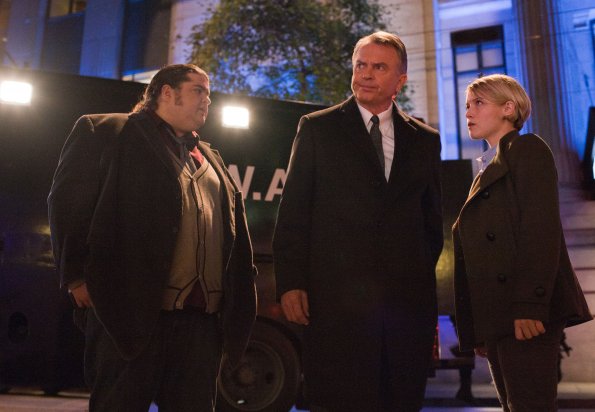With "Cal Sweeney," Alcatraz timidly pushed its main story forward, leaving some breadcrumbs leading back to the mystery surrounding the disappearance of the 1963 inmates, and showing more of what is being done today to deal with their return. Unfortunately, the episode was so steeped into the format adopted by the series so far that the restrained strides forward didn't have much effect on its overall impact.
"Cal Sweeney" was about the title character, an inmate who ended up in the famous prison because of his tendency to open and empty other people's safety deposit boxes. During the hour, everything that happened in 1960 was interesting and well developed. I happen to like the broadness and openness of the show's premise and many of the choices made in the format followed by every episode so far.

At the beginning of the episode, we travel back in time to meet Cal Sweeney (Eric Johnson), an inmate who has a keen sense of business and is running an "operation" within the walls of Alcatraz. His activity makes many envious, including the deputy warden E.B. Tiller who wants a piece of it. It was good to have Sweeney present his core principle for success (belly-up hypothesis) and get another inmate to use that against him. All that happening while the story continued the intriguing exploration of the assortment of odd characters around the eccentric warden Edwin James.
In present-day San Francisco, things were far less ambitious. It showed quite early with Doc's publication of "a major breakthrough in crime prevention theory" based on the world of Batman. It is unfortunate that the two main characters we know the most now (Doc and Hauser) are the less interesting, both in their backstories and in the way they are being developed. Lucy (Parminder Nagra) and Rebecca Madsen (Sarah Jones) are not only more appealing as characters, but seem to be much more than tools — as opposed to Doc who is a database and Hauser who is the hunting dog. The two females seem to have some more substantial ties to the events through their families and it would be interesting to explore that.

Also, the way the show resists embarking on a full episode devoted to advancing the plot is annoying, especially considering that with the current episode format, elements that are meant to stir the story toward the main mystery are not always unveiled smoothly. The introduction of the intriguing door (opened by the recovered keys) was acceptable because flashbacks don't have to be held to the same standard of continuity as present-day San Francisco. However, opening the office door to a room full of scientists (never mentioned before) was not good execution: not all surprises work in fiction. And even if there was some element to substantiate the fact that Hauser seems to act as chief scientist, which I am skeptical about, it is irritating the way the show throws the character at us.